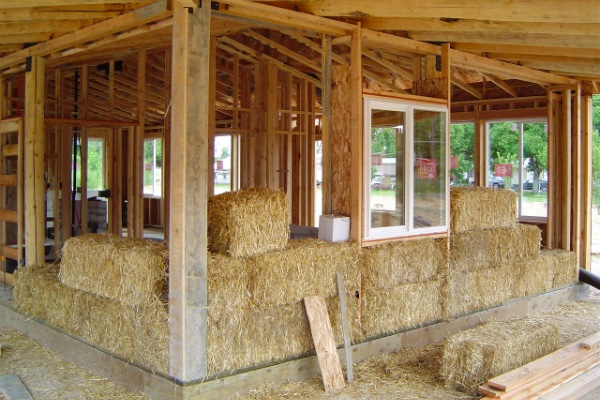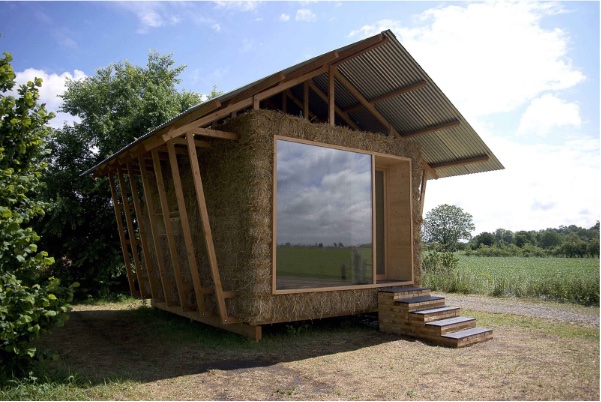ANTONIO LÓPEZ | Tungsteno
The sudden economic crisis brought about by the pandemic has led to joblessness among many inhabitants of large cities, who are now looking for work and settling in rural areas. At this juncture, added to the climate emergency, new forms of construction take on relevance: energy consumption becomes a high priority as we all spend so much time at home due to lockdowns, restrictions and extreme weather events (such as the heavy snowfall in central Spain left by Storm Filomena in early 2021). We now demand that the spaces in which we live be more comfortable and, additionally, sufficiently resilient to cope with the climatic upheavals to come without financially ruining us.
In passive houses, without constraining the interior possibilities, the key lies in the design of the exterior. The term passive house or passivhaus (a phonetic translation from German) began to gain importance in the late 1970s in Germany. There, the Passivhaus Institute was founded in 1991 and official certificates began to be issued to passive houses, or nearly zero-energy houses, that met certain requirements. The control of thermal losses and gains is essential in these dwellings, as well as avoiding thermal bridges—the meeting points of two materials through which heat can escape or cold can enter. The location of the windows is also chosen strategically so as not to turn them into vulnerable points, and double-glazed insulating glass is used to seal them. In Spain alone, passive houses with passivhaus certification represent an annual savings of 4.16 million kWh and prevent the emission of 792 tons of CO2—an amount equivalent to what could be absorbed by a forest area more than five times the size of the most emblematic green space in the Spanish capital: the Retiro Park in Madrid. That area is equivalent to 620 hectares, or almost 900 football pitches.

With a minimum environmental impact and cost of materials, the straw house is one of the greatest exponents of passive houses. Credit: EarthCraft Construction.
The myth of 'The Three Little Pigs' and straw houses
Passive houses represent an opportunity in the midst of the COVID-19 economic crisis and a gesture of reconciliation with the environment. Straw-bale houses stand out as a trend due to the lower cost and environmental impact of the materials used. Although in the collective imagination we have the idea that straw is a fragile and combustible material, when arranged in the form of bales and with the air eliminated, its combustibility is minimal. Additionally, walls made with straw are covered with lime, clay or earth to protect them even more.
Straw-bale houses are much sturdier than the story of The Three Little Pigs would have one believe. In reality, constructions with these materials would withstand both the huffing and puffing of any wolf and, more importantly, climatic fluctuations. In fact, in the words of Mirco Zecchetto, an architect specialising in this type of housing: "A straw-bale house is more comfortable, has better thermal insulation, with walls that breathe and don’t trap moisture and with materials without toxic emissions. Not to mention that the carbon footprint is practically non-existent."

The production of straw bales and their transport for the construction of houses requires much less energy than other construction processes. Credit: Wikimedia Commons.
Saving energy in the construction and use of the house
Straw-bale houses seek to achieve an airtight space to maintain the temperature and regulate the air with a filtering and ventilation system that prevents heat loss. This airtightness also provides an excellent degree of acoustic insulation. The architect Eve Blanco, who builds this type of housing in Asturias, uses this material because it increases the thermal capacity of the house in a natural way, which makes it possible to dispense with heating and air conditioning. To optimise energy consumption, the homes she builds have a greenhouse that captures solar radiation, which translates into a savings of between 30% and 40%.
Straw is an abundant agricultural waste product, which makes it a very cheap material that is also available in most parts of the world. According to the specialised architectural studio Meta2020: "For the production of straw bales and their transport to the construction site, much less energy is needed than for the production of other insulating materials, up to 77 times less than for the production of mineral wool, for example."
The challenge of making their construction cheaper
The existence of specialised construction networks, such as the European Strawbale Network or the Spanish Strawbale Construction Network is evidence of the boom in the use of this material. And it is no wonder, because among its benefits, as explained by Meta2020, straw is a "breathable, healthy, moisture regulating, very versatile, easy to work with" material.
This trend revives one of the oldest methods for creating homes. Mankind has been building homes out of straw and mud for thousands of years, but baled straw as a modern building material emerged in the 19th century, with the invention of the baling machine. And its resurgence in recent decades as a more environmentally-friendly building technique is based on these advantages of energy efficiency, while also appealing to the sensation of returning to earlier times, not to mention the absence of toxic substances in the construction process.
However, despite its great potential, cost is the main barrier to the popularisation of the straw-bale home. Although they could be cheaper than conventional homes, in practice this is only true if one opts for the self-build option. Some future owners take courses to learn how to build straw-bale walls and thus reduce the cost of their home, because otherwise it is comparable in price to a house made of bricks and cement, or even more expensive. The reality of this promising sector is that, at present, it remains a niche market, with few professionals and few companies specialised in using straw as a building material.
· — —
Tungsteno is a journalism laboratory to scan the essence of innovation. Devised by Materia Publicaciones Científicas for Sacyr’s blog.
